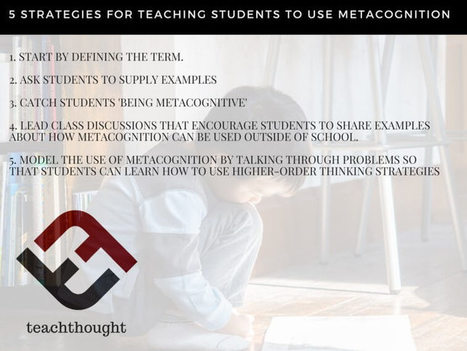Metacognitive skills enable students to regulate their thinking and to become independent learners who can enhance their school and life experiences. Wherever the ambitions of our youth lead them, they will benefit from being able to solve problems creatively, think analytically, communicate effectively, and collaborate with others. As we conducted research for our latest book, we found that studies simultaneously indicate that metacognition is one of the most important skillsets students need, yet often is not taught.
When students are metacognitive, they can take a step back and observe their thinking. Sometimes this is called the reflective process. When using this approach, they might ask themselves questions like these: What is the problem to be solved? How should I solve the problem? How well am I doing? How well did I do? How can I do it better the next time? The metaphor we developed as a way to help educators teach metacognition to children and youth across grade levels is that of “driving your brain.”
Teaching students to drive their brains and become self-directed learners can be compared to driver’s education, in which students receive explicit instruction on how to guide their thinking, when to slow down, when it’s okay to speed up, and how to avoid wrong turns.
Learn more / En savoir plus / Mehr erfahren:
http://www.scoop.it/t/21st-century-learning-and-teaching/?tag=Metacognition



 Your new post is loading...
Your new post is loading...








Learn more / En savoir plus / Mehr erfahren:
http://www.scoop.it/t/21st-century-learning-and-teaching/?tag=Metacognition